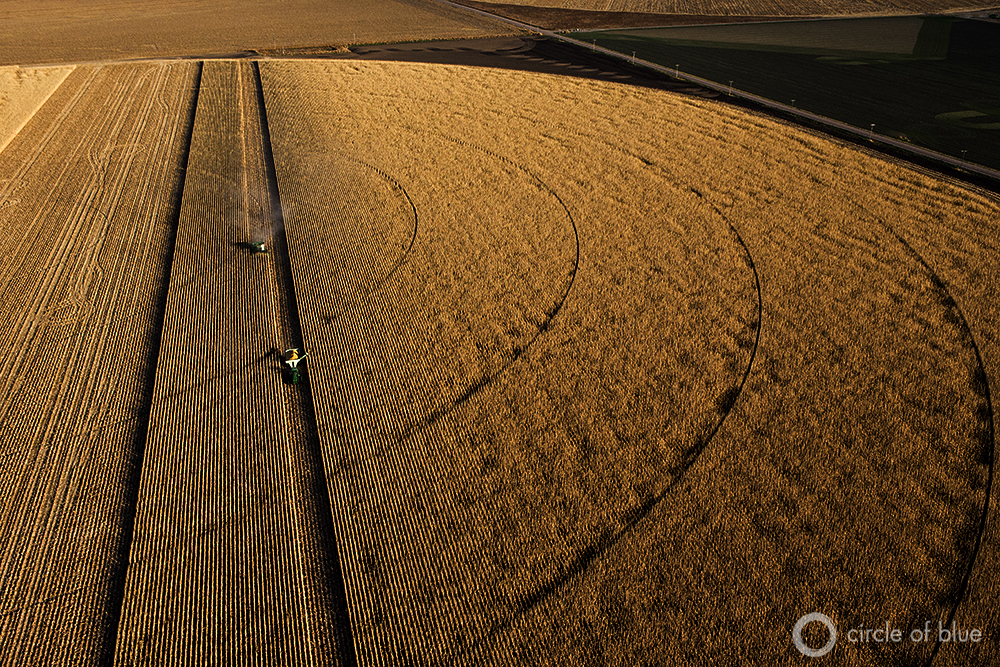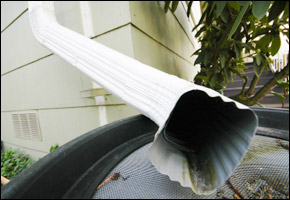Kansas Water District Votes on Ogallala Conservation Plan
Using less water for agriculture is an idea spreading across the Great Plains.

By Brett Walton
Circle of Blue
Five farm counties in western Kansas are voting this week on a course of action that cuts against the grain of American water history yet is becoming more common on the Great Plains as natural resource limits speed closer and farming communities struggle to maintain their livelihoods.
The five counties, all part of the Western Kansas Groundwater Management District (GMD), are voting on a water diet, a diet they are not required to endure but a diet that many in the region believe will stretch their finite water supply a little farther and allow them to pass farming’s flame to their children and grandchildren.
The farmers casting ballots in fairground meeting halls in Leoti, Scott City and three other county seats will endorse or reject a plan to reduce the amount of water they pump out of the renowned Ogallala Aquifer by roughly 20 percent through the year 2020.
Beneath eight plains states, the Ogallala is the largest underground freshwater reserve in the United States, but it cannot last at current rates of use. More than 95 percent of the water is sprayed on farm fields to sustain a $US 30 billion agriculture economy. In parts of western Kansas the aquifer is nearly exhausted or already gone. When the water goes, towns wither.
By the end of Friday when ballots are due in Greeley County, the last of the five to vote, the entire Western Kansas GMD may become the second jurisdiction and the largest in the state to take advantage of a water conservation law signed by Republican Governor Sam Brownback in 2012.
That law created a special form of water regulation called a local enhanced management area, or LEMA. The law allows local districts to set their own water conservations plans which are then enforced by the state.
Water districts from the Texas Panhandle to the Nebraska Sand Hills that draw from the Ogallala regulate how much water farmers can pump. Some of these rules stretch back decades, but what is new in Kansas is that restrictions are being suggested, developed, and endorsed by the communities themselves.
Designing a Diet
To pass, the LEMA needs to earn the support of 67 percent of voters in the five counties – Greeley, Lane, Scott, Wallace, and Wichita. Only those individuals holding a state-issued water right are allowed to vote.
Jan King, general manager of the Western Kansas GMD, did not return multiple phone calls and emails inquiring about the proposal’s chances of passing.
Actual water use from 2008 to 2012 will be used as a baseline for the 20 percent reduction.
Farmers who are already using very little water will not be asked to make the same commitment as those who have more wiggle room. Those whose historical use of water is between eight and 10 inches per acre will be asked to cut down to eight inches. Those already below the eight-inch threshold will not be asked to cut at all.
Roughly one in five wells in the district would not be affected because they are already thrifty. Two-thirds of wells use more than 10 inches per acre per year.
The reductions are targeted at farmers, who account for 97 percent of the district’s water permits. Cities, industries, and livestock operators will not be under new restrictions but they will be required to submit a conservation plan. Farmers who hold a vested water right, one issued before 1945, are not subjected to any restrictions, though they can voluntarily join the cause.
To allow for more flexibility, farmers can ask that their annual allocation be converted to a six-year cap, covering the duration of the LEMA period. That way they can pump more in a dry year.
With all the exemptions, the actual reduction in total pumping will be slightly less than 20 percent.
Following a Precedent
The first LEMA in Kansas recently completed its first year, and early signs are of success.
Farmers in Sheridan County in northwest Kansas began a five-year conservation plan in 2013. Their goal is a countywide pumping reduction of 20 percent.
“The response from farmers was incredibly positive,” Katherine Wilkins-Wells, manager of the Northwest Kansas Groundwater Management District, which includes Sheridan County, told Circle of Blue.
Wilkins-Wells said that farmers adapted to the restrictions by planting a different mix of crops, less corn and more sorghum, for example, or by decreasing the number of plants per acre. Average water use in 2013, the LEMA’s first year, was slightly under the target of 11 inches per acre.
So will evidence from Sheridan County that conservation does not destroy a farmer’s business mean more such plans in the future?
“We’re at a point where we’re trying to figure out how to move forward,” Wilkins-Wells said. “There are a lot of eyes on the [Western Kansas] GMD and on Sheridan County.”
Brett writes about agriculture, energy, infrastructure, and the politics and economics of water in the United States. He also writes the Federal Water Tap, Circle of Blue’s weekly digest of U.S. government water news. He is the winner of two Society of Environmental Journalists reporting awards, one of the top honors in American environmental journalism: first place for explanatory reporting for a series on septic system pollution in the United States(2016) and third place for beat reporting in a small market (2014). He received the Sierra Club’s Distinguished Service Award in 2018. Brett lives in Seattle, where he hikes the mountains and bakes pies. Contact Brett Walton









This is a step in the right direction but still not nearly enough reduction in the total water use. Note the “vested water right holder” will not be affected. This is a huge number that needs to be reduced in a big way!